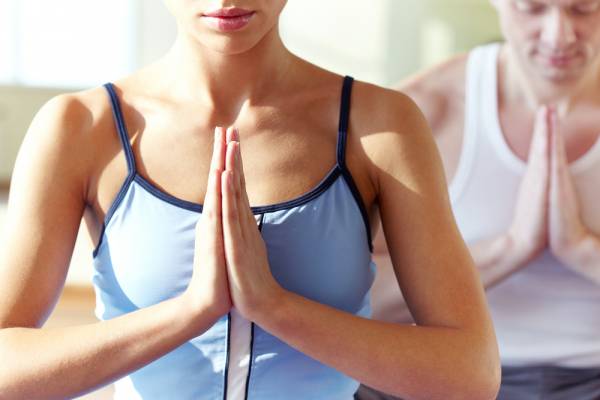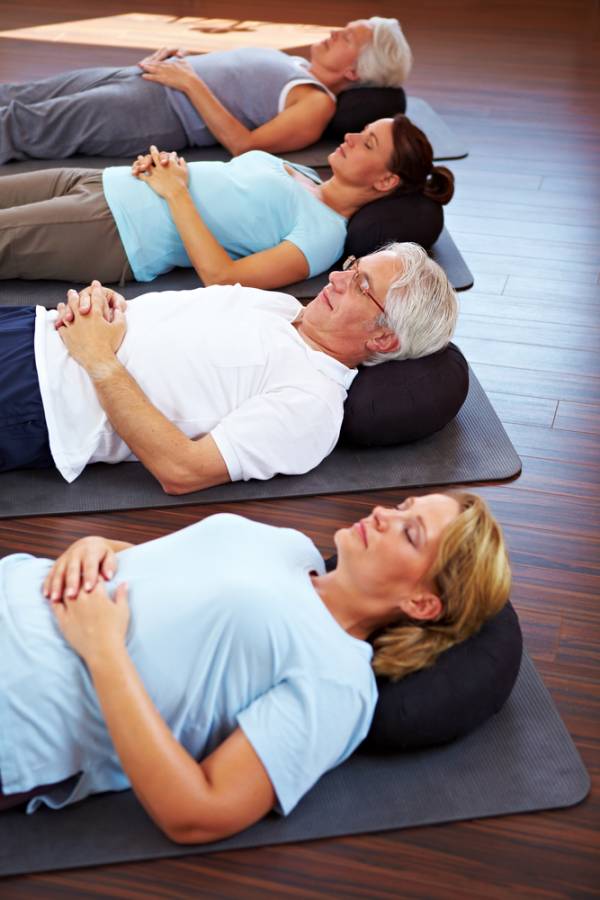I have been feeling a little off these past few weeks. Working too many hours, grinding too many reps at the gym, and suffering a bit of a personal set back. It happens. We ebb and flow and we burn out. I have been sensing mine coming on and with my intuition getting keener these days, I try and pay attention to those signs. When burnout happens I tend to find some rest, get in touch with nature, or find some meditative and reflective time. I have entertained several things over the years to combat weariness and am always looking for those things that might turn the burnout tide. Then a client told me about restorative yoga. Say what?
I have practiced Bikram yoga, vinyasa, and various other styles, but this one was new to me. As I noted in an article I wrote recently, I am not a yoga guy. I tend to move fast and even flow (vinyasa) yoga is not really my speed. Still, that is exactly the appeal of yoga to me – it can help offer a balance – a sort of yin to my yang. That being said, I still look to yoga to provide a hard and tough workout. I have gravitated towards the hot and slow styles of yoga, where I sweat buckets and get my heart rate going. Restorative yoga is not that. Rather, restorative yoga is intended to take the mindfulness that is found in all disciplines of yoga to the next level. It’s still and slow, and it’s as much (or more) about the mind as it is the body.
As I was prepping to take my restorative class at the yoga studio at our gym, my co-worker said to me “You’ll love it, it’s kind of like adult nap time.” In my rundown state, I thought, “Actually, that sounds perfect.” Adult naptime is a bit of an exaggeration, but we did start class off with shavasana. Now I have ended every yoga class I’ve taken with shavasana, but I have never started one that way. The other thing that jumped out at me was all of the props the teacher handed me – a blanket, a pillow thingy, an eye bag, a strap for my feet, and blocks. Props and shavasana – maybe it is adult nap time after all!
In truth, restorative yoga is simply that – restorative. It is the centering of your breath and body – aligning the physical and mental by practicing stillness or gentle movement for extended periods of time. The props assist in helping you to hold poses longer. We held certain poses and postures for minutes, but not in the way you would in a Bikram practice. No horse stance or warrior poses where your legs are absolutely burning like they are going to explode. More like holding a stretch by assisting that stretch with a strap around the foot. It felt therapeutic and it also was somewhat relaxing. That doesn’t mean it was easy though.
 If you are like me, practicing stillness can be an absolute chore. It’s much easier for me to go run five miles than sit perfectly still in a meditative practice for thirty minutes. To calm the mind is even more challenging for me. But that is exactly the task and goal of restorative yoga – to calm the body and mind and to be wholly present. To note each breath in and each breath out, as it is with meditation. After about three breaths my mind is off wandering to who knows where. Bringing my mind back to present and to focus on that breath takes practice, discipline, and effort. Hmm, those sound familiar. They’re same variables it takes succeed in any other modality of exercise.
If you are like me, practicing stillness can be an absolute chore. It’s much easier for me to go run five miles than sit perfectly still in a meditative practice for thirty minutes. To calm the mind is even more challenging for me. But that is exactly the task and goal of restorative yoga – to calm the body and mind and to be wholly present. To note each breath in and each breath out, as it is with meditation. After about three breaths my mind is off wandering to who knows where. Bringing my mind back to present and to focus on that breath takes practice, discipline, and effort. Hmm, those sound familiar. They’re same variables it takes succeed in any other modality of exercise.
Honestly, if I were to walk by a restorative yoga class and look through the window and see people laying down on blankets and props I’d probably shake my head and keep walking. But sometimes you have to try things that aren’t perhaps your natural speed, especially if you’re stuck. Having the patience and perseverance to try stillness and stick with it is another matter. Stillness is hard. Personally, I am never going to be mistaken for a monk or a yogi. I am increasingly intrigued though in how stillness creates room in us. Restorative yoga, as well as other disciplines of yoga and the martial arts, allows us room to see clearly, find our natural state, and to heal.
As for restorative yoga, I almost think it should be called meditative yoga rather than restorative. I don’t think I’ve ever tried an exercise class where my body was less challenged and my mind more challenged. That is not quite an exact statement as the act of simply sitting cross-legged for extended minutes can be physically excruciating for me – my sit bones ands knees beg for a shift of position just after a few minutes. In such moments, the willpower that serves so well in regular exercise does little for you. You simply have to sit with that discomfort and find a way to face and move through it.
 At the end of class the instructor asked how the practice was for everyone. I wasn’t quite sure how to answer, so I went with the obligatory “good.” One of the regular participants mentioned to us first timers, “Notice how you sleep tonight.” I slept like a baby who could sleep for twelve hours straight – soundly, that is. The thing with yoga in general for me is that in the moment it’s hard for me to find the payoff. I struggle with the slower pace and the stillness, but later my body thanks me and rewards me with feeling at peace, relaxed, and rested.
At the end of class the instructor asked how the practice was for everyone. I wasn’t quite sure how to answer, so I went with the obligatory “good.” One of the regular participants mentioned to us first timers, “Notice how you sleep tonight.” I slept like a baby who could sleep for twelve hours straight – soundly, that is. The thing with yoga in general for me is that in the moment it’s hard for me to find the payoff. I struggle with the slower pace and the stillness, but later my body thanks me and rewards me with feeling at peace, relaxed, and rested.
It’s probably a pretty good litmus test to pay attention to our body in the aftermath of how we treat it. We’re so focused on feeling good in the moment that we ironically end up feeling not as not optimal later. Bad food, strong drink, and even too much intense work or exercise can feel good in the moment, but can leave us with a “hangover” later. Conversely, struggling through a practice where we are out of our comfort zones typically offers us a reward later – peace, serenity, restfulness. In life there is a time to push and a time to grind, a time to ebb and a time to flow. If your body and your mind tell you that burnout is on the horizon, you might give restorative yoga a shot.
Photos courtesy of Shutterstock.






